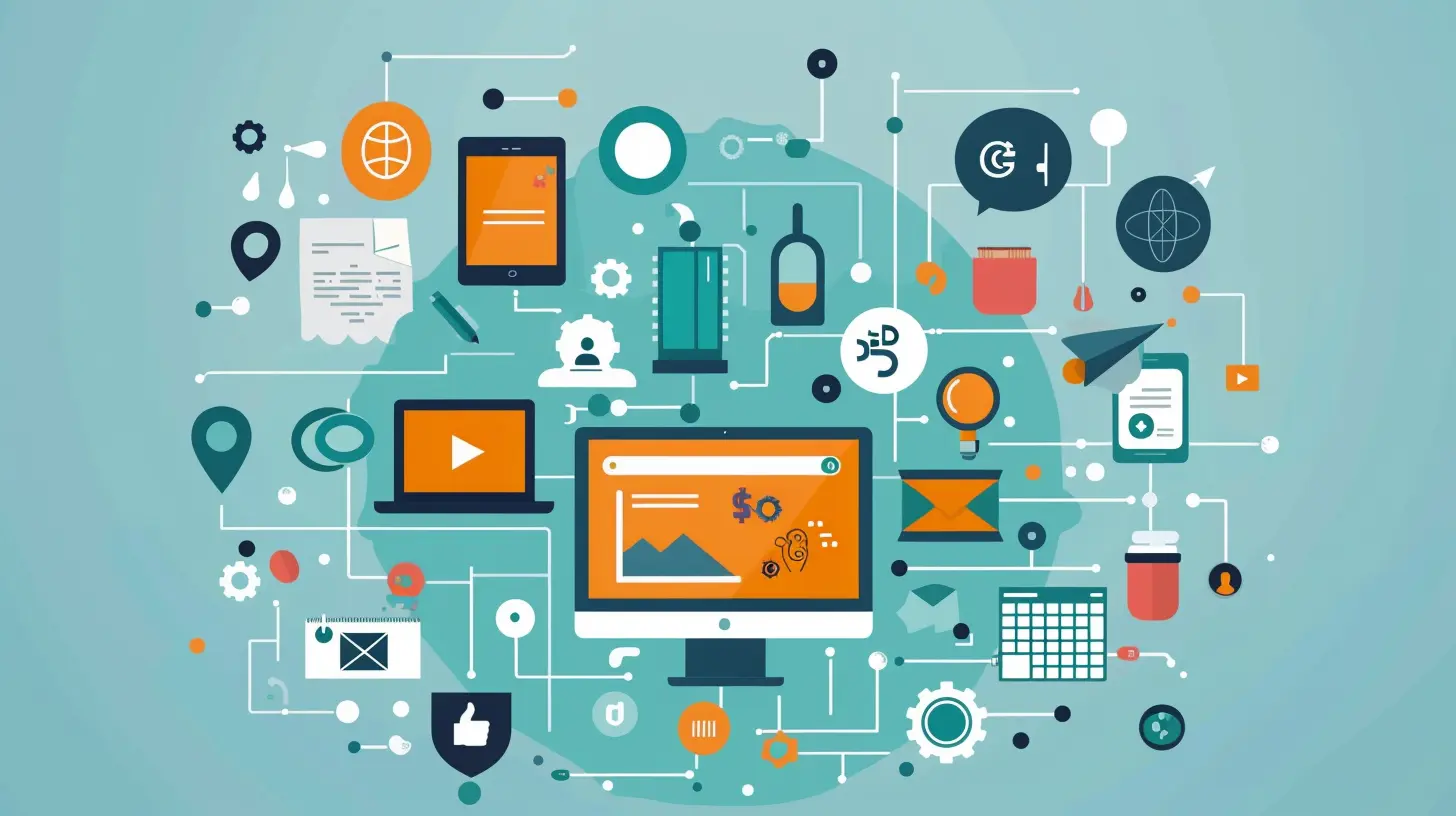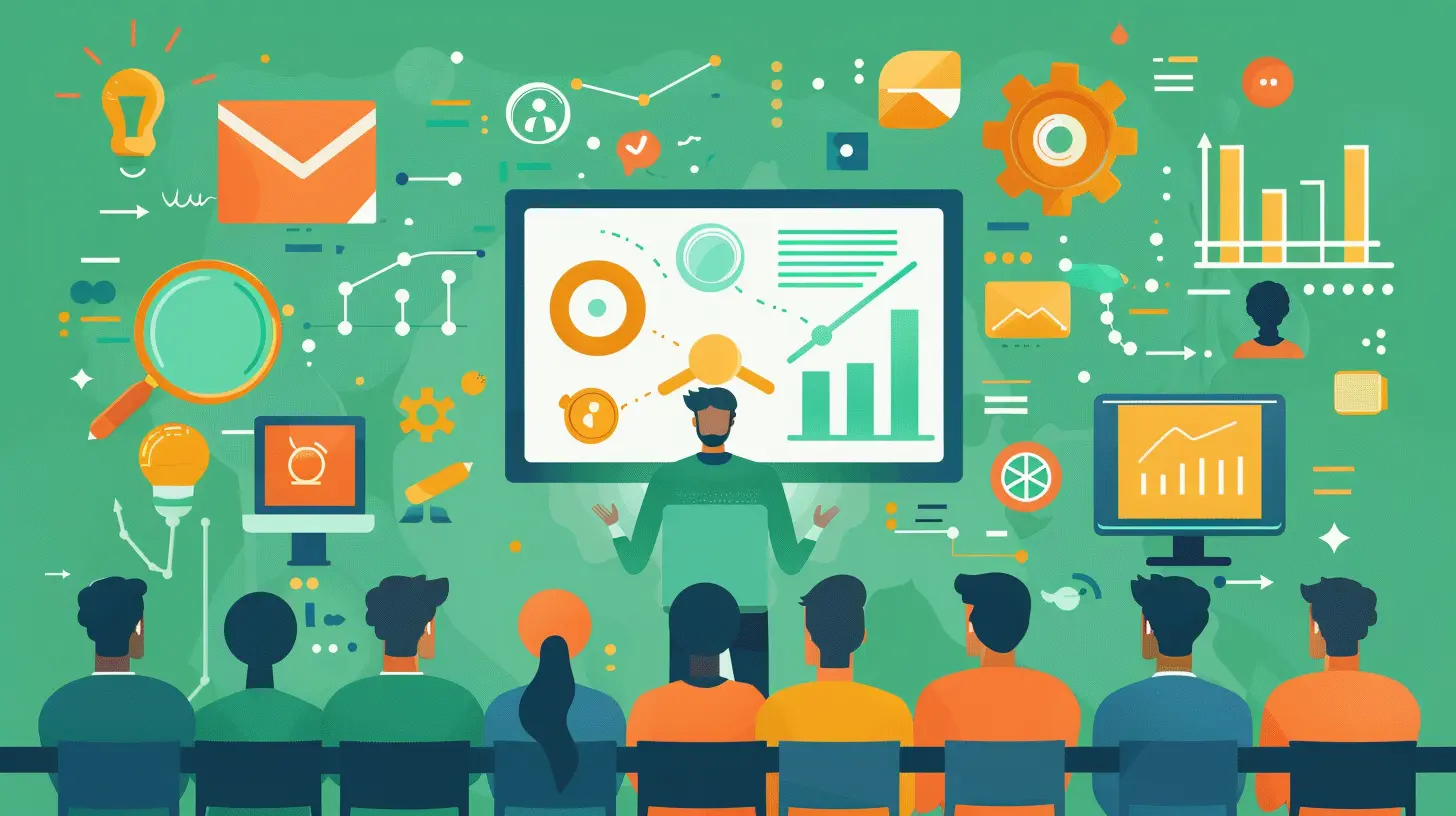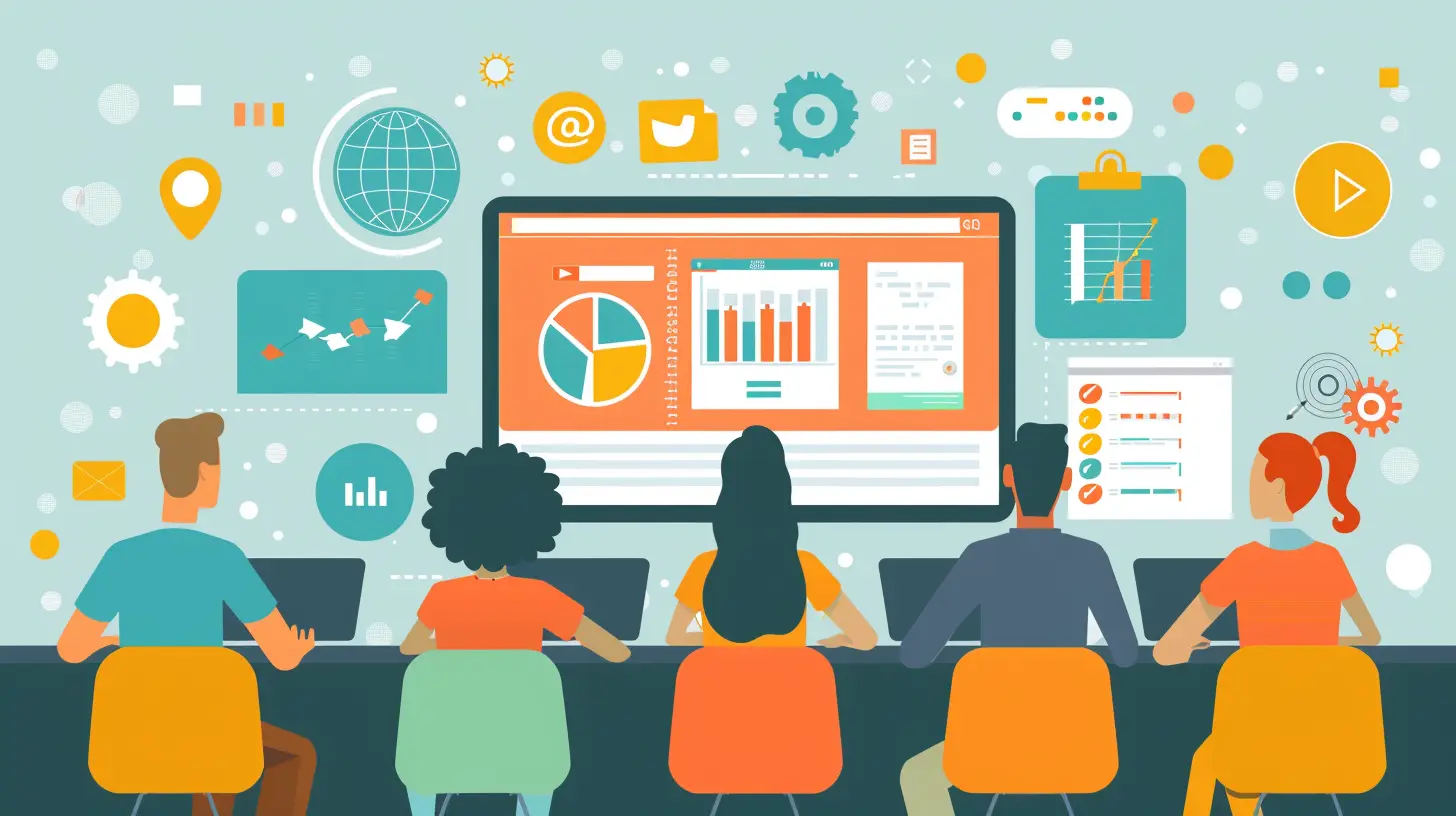The Role of Learning Management Systems in Modern Education
28 April 2025
Education has transformed dramatically over the past few decades. Long gone are the days when learning was confined to traditional brick-and-mortar classrooms with chalkboards and textbooks. Today, digital solutions have taken center stage, making education more interactive, accessible, and efficient. One of the most crucial innovations in this transformation is the Learning Management System (LMS).
But what exactly is an LMS, and why has it become an essential tool in modern education? Let’s dive in and explore how Learning Management Systems are shaping the future of learning. 
What is a Learning Management System (LMS)?
At its core, a Learning Management System is a software application that helps organizations, schools, and businesses deliver, manage, and track online education and training programs. Think of it as a digital classroom—a centralized hub where educators can create courses, assign materials, track student progress, and even conduct assessments.Whether you’re a university professor, a corporate trainer, or an independent educator, an LMS offers a structured, organized way to facilitate learning. It gives students access to educational content anytime, anywhere, eliminating the constraints of traditional learning. 
How LMS is Revolutionizing Modern Education
Technology has disrupted almost every industry, and education is no exception. Learning Management Systems are bridging gaps, making education more inclusive, flexible, and efficient. Let’s break down the core ways an LMS is transforming learning.1. Enhancing Accessibility and Flexibility
One of the biggest advantages of an LMS is its anytime, anywhere accessibility. Students no longer have to be physically present in a classroom to learn. Whether they’re at home, at a café, or traveling, they can access course materials on their laptops, tablets, or smartphones.This level of flexibility is especially beneficial for:
- Working professionals juggling jobs and education
- Students in remote areas with limited access to traditional schools
- Individuals with disabilities who might find it challenging to attend physical classrooms
An LMS removes barriers and provides an equal learning opportunity for everyone, regardless of their location or personal circumstances.
2. Personalized Learning Experience
Let’s face it—every student learns at their own pace. Some grasp concepts quickly, while others need additional time and resources. Traditional classroom settings often struggle to accommodate these differences, but an LMS makes it easier.With features like self-paced courses, interactive quizzes, and AI-driven recommendations, students can learn in a way that suits them best. They can revisit lectures, pause and rewind videos, and take their time understanding complex topics without feeling pressured.
3. Real-Time Progress Tracking and Feedback
In a traditional classroom setup, tracking student performance can be cumbersome. Teachers often have to manually grade assignments and tests, which can be time-consuming and prone to human errors.An LMS automates this process. Educators can monitor student progress in real-time, generate performance reports, and even provide instant feedback. This not only helps students improve but also allows teachers to identify areas where additional support is needed.
4. Cost-Effective Learning Solution
Education can be expensive, especially when you factor in costs like travel, textbooks, and classroom infrastructure. An LMS significantly reduces these expenses by moving learning online.For institutions, an LMS eliminates the need for physical classrooms and printed materials. For students, it cuts down on commuting costs and allows them to access free or affordable digital resources instead of pricey textbooks.
Simply put, an LMS makes quality education more affordable and scalable.
5. Interactive and Engaging Learning Experience
Gone are the days when learning was just about reading textbooks and listening to lectures. Modern LMS platforms integrate videos, gamification, quizzes, simulations, and live webinars to make learning more engaging.Instead of staring at a boring blackboard, students can participate in:
- Discussion forums to interact with peers and instructors
- Virtual reality (VR) simulations for hands-on experience
- Gamified learning with rewards, points, and leaderboards
This approach boosts motivation, improves retention, and makes learning fun rather than a chore. 
The Role of LMS in Different Educational Sectors
An LMS is not just for schools and universities. It plays a significant role across various educational sectors. Let’s take a look at how different industries benefit from LMS platforms.1. Higher Education
Colleges and universities are rapidly adopting LMS platforms to:- Deliver online courses
- Facilitate blended learning (a mix of online and traditional classes)
- Manage assignments and exams
- Encourage student collaboration with discussion boards
Platforms like Blackboard, Moodle, and Canvas have become a staple in many universities, helping educators create structured, engaging courses.
2. Corporate Training
Businesses use LMS platforms to train employees, onboard new hires, and upskill their workforce. Instead of traditional training sessions, companies can:- Provide online training modules
- Track employee progress
- Offer certifications for skill development
Popular corporate LMS platforms like TalentLMS and Docebo help businesses boost employee productivity and ensure continuous learning.
3. K-12 Education
Even elementary and high schools are leveraging LMS platforms to:- Manage lesson plans
- Assign homework digitally
- Conduct virtual classes
- Enable parent-teacher communication
Especially during the pandemic, platforms like Google Classroom and Schoology became essential for ensuring uninterrupted learning for K-12 students. 
Choosing the Right LMS for Educational Needs
With so many LMS platforms available, finding the right one can be overwhelming. Here are some key factors to consider when selecting an LMS:1. User-Friendly Interface – The LMS should be easy to navigate for both students and educators.
2. Mobile Compatibility – Ensure it works seamlessly on smartphones and tablets.
3. Customization Options – Does it allow educators to customize courses based on their teaching style?
4. Analytics and Reporting – It should provide real-time data on student progress.
5. Integration Capabilities – The LMS should integrate with other tools like Zoom, Google Drive, or third-party apps.
6. Scalability – Whether for a small classroom or a large organization, the LMS should be able to scale as needed.
By carefully evaluating these factors, educators and organizations can choose an LMS that best suits their needs and enhances the learning experience.
The Future of LMS in Education
If there’s one thing we can be sure of, it’s that Learning Management Systems are here to stay. As technology advances, LMS platforms will become even more intelligent, adaptive, and immersive.We’re already seeing trends like:
- AI-powered learning assistants that provide personalized recommendations
- Virtual and Augmented Reality (VR/AR) simulations for interactive learning
- Blockchain-based certification for secure, tamper-proof credentials
The future of education is undoubtedly digital, and LMS platforms will continue to play a pivotal role in shaping how we learn, teach, and grow.
Final Thoughts
Learning Management Systems are no longer a luxury—they’ve become a necessity in modern education. They offer flexibility, cost-effectiveness, and engagement, making learning accessible for everyone. Whether in schools, colleges, or businesses, LMS platforms are streamlining education and revolutionizing the way knowledge is shared.As we move towards an increasingly digital world, embracing LMS solutions will be key to enhancing education, improving learning outcomes, and preparing students for the future.
So, whether you're an educator or a learner, one thing is clear—the future of education is digital, and LMS is leading the way!
all images in this post were generated using AI tools
Category:
Educational TechnologyAuthor:

Zoe McKay
Discussion
rate this article
6 comments
Susan Bell
Learning Management Systems: because textbooks are so last century. Welcome to the future of education!
May 14, 2025 at 6:41 PM

Zoe McKay
Thank you! Learning Management Systems truly represent a transformative shift in education, making learning more accessible and engaging for everyone.
Tamsin McGowan
Learning Management Systems (LMS) are pivotal in modern education, enhancing accessibility, engagement, and personalization. They streamline course management, facilitate collaboration, and provide valuable analytics for educators. By integrating technology, LMS not only support traditional learning methods but also foster innovative, interactive educational experiences for diverse learners.
May 10, 2025 at 3:31 AM

Zoe McKay
Thank you for your insights! I completely agree that LMS are essential for enhancing the educational experience by improving accessibility and engagement while supporting various learning methods.
Zane Price
Great insights, thank you!
May 9, 2025 at 8:09 PM

Zoe McKay
Thank you for your feedback! I'm glad you found it insightful.
Natasha Clayton
In digital realms, knowledge flows; LMS lights pathways, empowering minds to endlessly grow.
May 8, 2025 at 11:15 AM

Zoe McKay
Thank you for your insightful comment! I completely agree that LMS platforms play a crucial role in facilitating knowledge and empowering learners.
Harley Elliott
This article beautifully captures the essential role Learning Management Systems play in today’s education landscape. By enhancing accessibility and fostering collaboration, they truly empower both educators and students. Thank you for shedding light on such a vital topic in modern learning!
May 5, 2025 at 12:53 PM

Zoe McKay
Thank you for your kind words! I'm glad you found the article insightful — LMS indeed transform education by enhancing accessibility and collaboration.
Olive McRae
Great insights on Learning Management Systems! They truly transform education, making learning more accessible and engaging for students everywhere. Keep inspiring!
May 4, 2025 at 7:07 PM

Zoe McKay
Thank you for your kind words! I'm glad you found the insights valuable. LMS truly are redefining education for the better!
MORE POSTS

Building Digital Literacy: Preparing Students for a Tech-Driven World

How Virtual Classrooms Enhance Teacher Collaboration Across Borders

Using Role-Playing and Simulations to Create an Engaging Classroom

Health Education for Young Children: Teaching the Basics Early

The Importance of Time Management in Virtual Learning